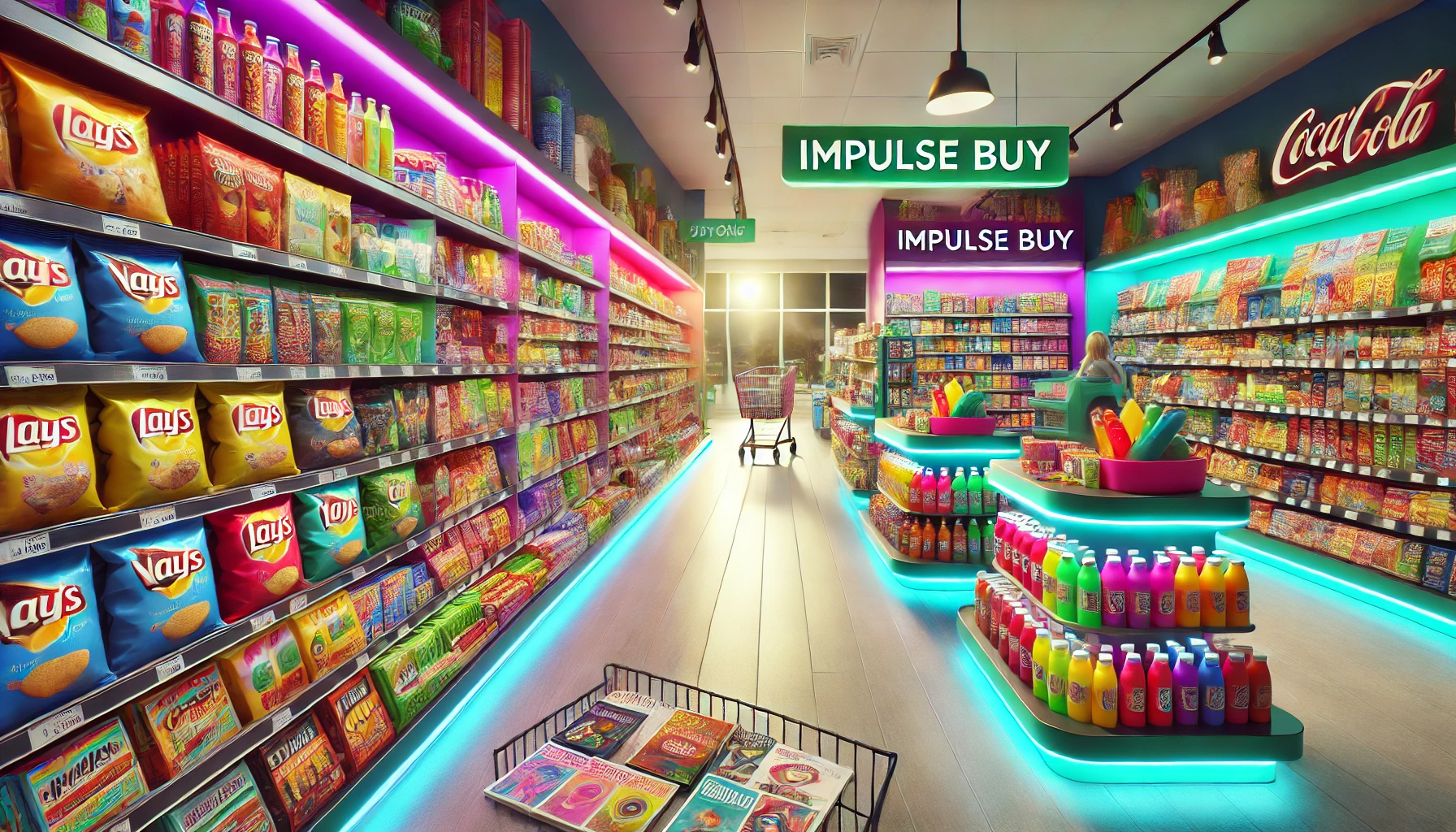Impulse buys in supermarkets are the result of expertly designed layouts, strategic product placements, and subtle psychological nudges that lead shoppers to grab extras without even realizing it.
Why Do We Fall for Supermarket Impulse Buying?
Impulse buying in supermarkets happens when unplanned purchases catch our eye or spark a sudden desire. From snacks to last-minute toiletries, these products are strategically placed to be irresistible. But what makes supermarkets so effective at this? Let’s dive deeper.
The Science and Psychology Behind Impulse Buying
1. Understanding Consumer Psychology
Supermarkets know that impulse buying is rooted in basic psychology. The excitement of an unexpected find, the lure of a good deal, and even the fear of missing out (FOMO) are all factors that lead to quick, unplanned purchases.
2. Shopping as an Experience
Today’s supermarkets aim to make shopping a complete sensory experience, with everything from music to lighting crafted to keep you comfortable and alert. The longer you feel relaxed and engaged, the more likely you are to pick up extras.
How Supermarkets Influence Impulse Buys with Layout and Design
Supermarket layout is a science. Every aisle, shelf, and display serves a purpose to influence purchasing behavior.
The Layout Strategy: Why You Move the Way You Do
- Right-Side Entrances: Studies show most people prefer to turn right when entering a store, so high-profit items often sit just to the right.
- Long Aisles: Aisles are designed to pull you in, with eye-catching products spaced out to encourage browsing.
- Dairy at the Back: Common staples like milk and eggs are often placed in the back of the store, encouraging customers to walk past other products along the way.
Prime Product Placement
- Eye-Level Shelving: Products at eye level are likely to be picked up first. Premium brands often pay for these prime spots.
- Checkout Displays: Small, tempting items are placed near the checkout to catch attention while customers wait.
Key Triggers of Impulse Buying in Supermarkets
1. Special Promotions and Deals
Special promotions like “Buy One, Get One Free” or limited-time offers are powerful hooks. These discounts make customers feel like they’re getting extra value, even if they didn’t plan to buy the product in the first place.
2. Appealing Packaging and Branding
Packaging plays a huge role in impulse buys. Bright colors, fun graphics, and clear, enticing messages can grab attention, especially for products aimed at children or quick snacks.
3. Free Samples and Tastings
Ever wondered why there’s often a sample stand in the snack aisle? Free samples are more than just a treat—they’re a trigger for impulse buying. Samples give customers a taste, quite literally, of a product, making them more likely to buy it right then.
4. Strategic Product Pairing
Supermarkets use cross-merchandising to create impulse buys by pairing related items together. For instance:
- Chips near Dips: Chips are often displayed near dips, making it easy to grab both.
- Seasonal Products: During holidays, special snacks or decor are grouped, encouraging customers to buy multiple items.
The Role of Sensory Appeal in Impulse Buys
1. Sight
Bright displays, organized shelves, and clear signage are all designed to attract attention and make products look appealing.
2. Smell
The smell of fresh bread or pastries can make you feel hungry, even if you aren’t, leading to extra purchases. Supermarkets often position bakeries near the entrance for this reason.
3. Sound
Background music in stores isn’t random—it’s usually slower-paced to encourage customers to take their time, which increases the likelihood of adding unplanned items to the cart.
The Digital Age: Online Grocery Impulse Buys
Impulse buying isn’t limited to physical stores; online supermarkets are also finding ways to encourage extra purchases. They use methods like:
- “Frequently Bought Together” Suggestions: These encourage shoppers to add complementary items.
- Flash Sales: Limited-time online sales create urgency.
- Subscription Reminders: Regular reminders to reorder items, even if the customer hadn’t planned on it.
Quick Tips to Avoid Impulse Buying in Supermarkets
While impulse buying can be fun and spontaneous, it can also lead to unnecessary spending. Here are a few tips to help:
- Make a List: Stick to a shopping list and avoid aisles with non-essential items.
- Shop When You’re Full: Shopping on a full stomach can help reduce the urge to buy snacks.
- Avoid High-Traffic Times: Shopping during quieter hours can help you avoid impulse buys.
Conclusion: Mastering Supermarket Impulse Buying
Supermarkets are designed to lead you into impulse purchases, using every trick from layout to sensory stimulation. By understanding these tactics, you can shop more mindfully and stay on top of your spending—while still enjoying the occasional treat.

